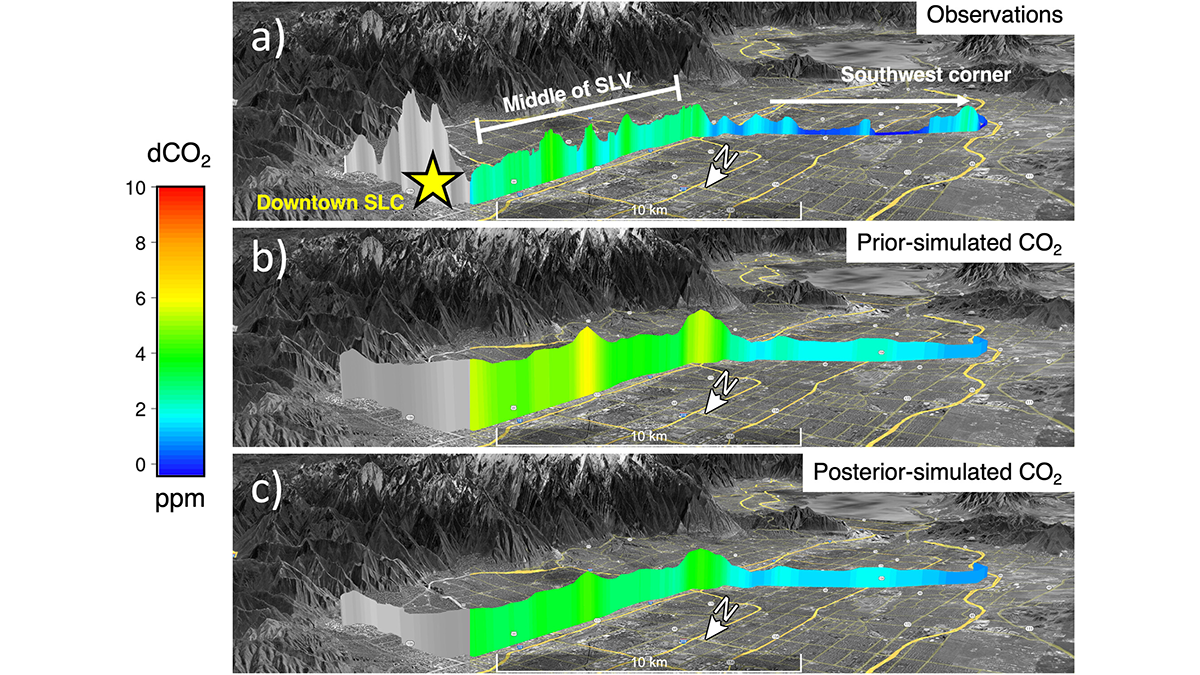Editors’ Highlights are summaries of recent papers by AGU’s journal editors.
Source: Journal of Geophysical Research: Atmospheres
We cannot manage what we cannot measure. To combat climate change, monitoring CO2 emissions across scales is crucial to understand the carbon cycle and to design effective emission mitigation policies. At the urban scale, measuring CO2 emissions is particularly challenging due to potentially large uncertainties in existing methods and the difficulties to track dynamics in time.
Mallia et al. [2023] developed a Bayesian atmospheric inverse model, which was constrained by stationary network and mobile CO2 observations, to estimate anthropogenic CO2 emission reductions from Salt Lake City during the first COVID-19 lockdown in 2020. The results illustrate the system’s capability to track human emissions with spatial-temporal dynamics in a medium-sized city, showing the possibility and necessity to expand the urban CO2 monitoring network for emission accounting. This will play a fundamental role in climate change mitigation at the urban scale.
Citation: Mallia, D. V., Mitchell, L. E., Gonzalez Vidal, A. E., Wu, D., Kunik, L., & Lin, J. C. (2023). Can we detect urban-scale CO2 emission changes within medium-sized cities? Journal of Geophysical Research: Atmospheres, 128, e2023JD038686. https://doi.org/10.1029/2023JD038686
—Bo Zheng, Associate Editor, JGR: Atmospheres

